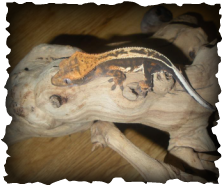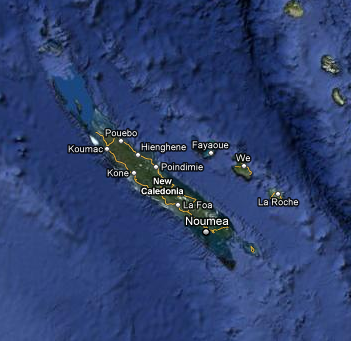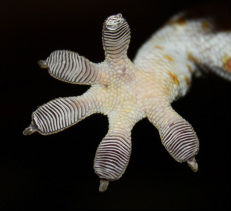Crested Gecko Care
- Crested Gecko's live in a tropical environment.
- Crested are nocturnal, meaning they primarily sleep during the day and are active at night. You can expect your crested to eat at night likely while you are asleep for this reason we recommend feeding at night.
- They do not require, however you may use specific types of UVB lighting.
- Temperatures may range from 72 - 80 degrees Fahrenheit during the daytime, with lows of 68-74 degrees Fahrenheit. It is important not to allow temperatures to rise above 80 degrees Fahrenheit at any time as doing so may cause stress, illness or death.
- Humidity should be kept between 50-75%. Having glass terrariums with a screen top makes it much easier to keep a humid environment. Keep in mind there should be a short dry out period during each day.
- Humid hides should be provided for all females and may be provided for males as well. Hides may be made from tupper-ware filled with moist, not wet Sphagnum Moss.
- Terrariums should be sprayed morning and night or more often to keep a humid environment and for drinking off of surfaces. Be careful not to spray too much as doing so can cause the humidity to get to high, which may create mold.
- Crested can be given a powder form of crested gecko food (Crested Gecko Diet) and non-acid fruits as well as crickets. Repashy CGD is one of the readily available gecko diets on the market and the diet that We personally feed to our geckos. Other available diets include Pangea, BPZ, BFG, and more. Once again it is best to feed at night.
- If crickets are given they should be gut loaded and powdered with vitamins and calcium. They should be given in addition to a complete diet, not instead of. A water bowl may also be provided, and if so, clean the bowl often and change the water daily.
- Crested are arboreal meaning they like to climb, so a vertical/tall tank with climbing area is needed.
- Many climbing surfaces such as plants, vines, and branches are necessary in their cage. Additionally it is a very good idea to provide hiding spots as well such as half logs, toilet paper tubes, PVC piping, etc...
- Females may often be housed together without problem (be sure to still keep a watchful eye); however males should not be housed together ever as they do not get along and will likely fight with one another and stress one another out.
- Additionally, females should not be housed with a male (bred) until at least 36 grams (however bigger is always better). If tailless that should be accounted for (- a few grams) as well.
- Lastly, when bringing home a new gecko, it is very highly recommended to give it a 2 week acclimation period in which you do not handle your gecko. This allows your gecko to get used to their new home, smells and surroundings and in turn your gecko will make the adjustment much better. Not doing so may result in extreme stress and may have dire consequences.
ONLY BASIC CARE INFORMATION CAN BE FOUND HERE. NOT A COMPLETE CARE SHEET!
(If you do not see the information you are looking for, you can always e-mail us...but if it is health related, please look elsewhere in addition, as we may not be able to respond right away. Also, we always recommend doing your research!!)
Crested Gecko Facts
(Correlophus Ciliatus)
|



